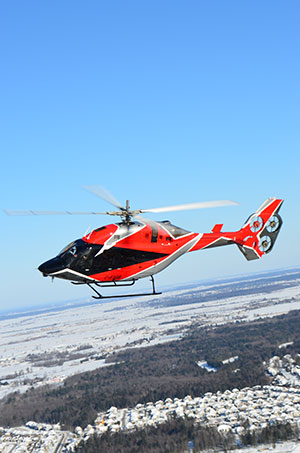
Bell's Electrically Distributed Anti-Torque Demonstrator Wins Popular Science “Best of What’s New in Aerospace” Award

Bell Textron Inc., a Textron Inc. (NYSE: TXT) company, announces that Popular Science recognized Bell’s Electrically Distributed Anti-Torque (EDAT) innovation as the winner of its “Best of What’s New" award in the Aerospace category for 2020.
This marks the third consecutive year Bell has won Popular Science’s "Best of What’s New" award in the Aerospace category. Bell’s Autonomous Pod Transport (APT) 70 was awarded in 2019 and the Bell V-280 Valor Joint Multi Role technology demonstrator won in 2018. This continued recognition demonstrates Bell’s determined effort to pursue innovative solutions to push the boundaries of vertical lift.
"'The Best of What's New' award showcases the year’s greatest feats of human ingenuity," says Popular Science editor-in-chief, Corinne Iozzio. "Even in a year like 2020, innovation has helped us glimpse a future that’s safer, smarter and more enjoyable than we might have thought possible. This collection, which includes everything from a new generation of Mars explorers to ultra-hygienic print-to-order eyeshadows, is full of items we’re proud to call the 'Best of What's New'."
Bell’s Electrically Distributed Anti-Torque (EDAT) is Bell’s latest commercial innovation, unveiled in February 2020. The EDAT system is composed of four small fans within a tail rotor shroud in an offset two-by-two pattern. Each of the rotors contains four blades, and they are powered by four separate motors with the electrical energy provided through generators driven by the turbine engines.
This innovation provides enhancements to reduction in noise pollution, compared to an aircraft with a conventional tail rotor, as well as lower operational and maintenance costs. Throughout the year, Bell’s EDAT innovation has garnered interest as the first technology of its kind in the rotorcraft industry, challenging the norms for aircraft noise output, safety and electrical distribution.
“The team continues to design, build and fly new innovative solutions by applying a unique approach to meet the needs of current and future customers,” says Eric Sinusas, director, Bell’s Commercial Development Programs. “Bell is honored by the continuous recognition from a leading technology industry voice like Popular Science, celebrating our team’s hard work and commitment to furthering technology in the aerospace industry.”
To learn more, follow Bell's progress on its social channels or visit the Bell website at https://www.bellflight.com/experience/innovation.
